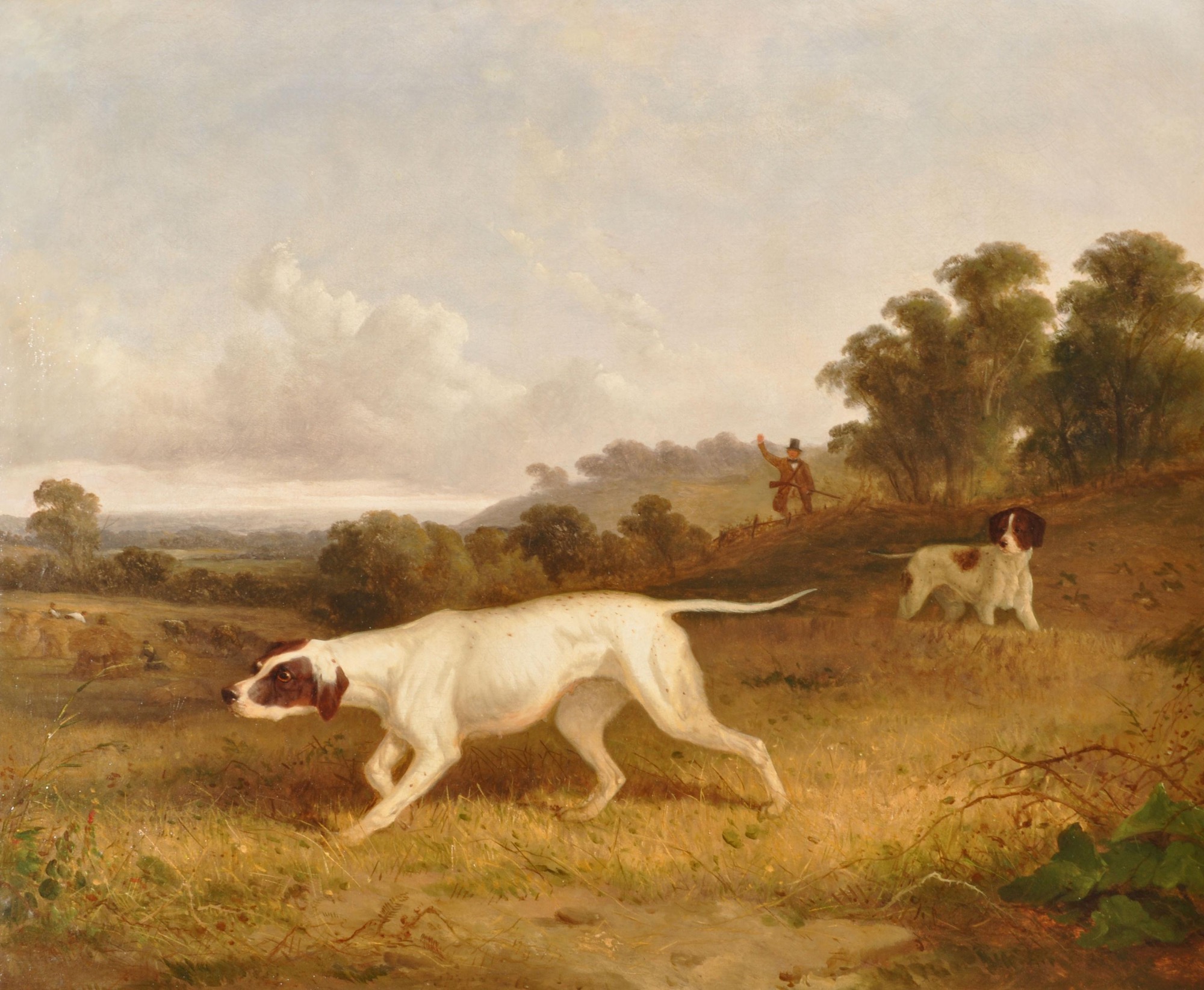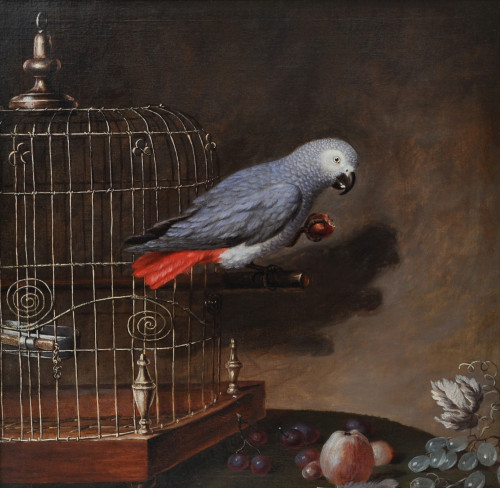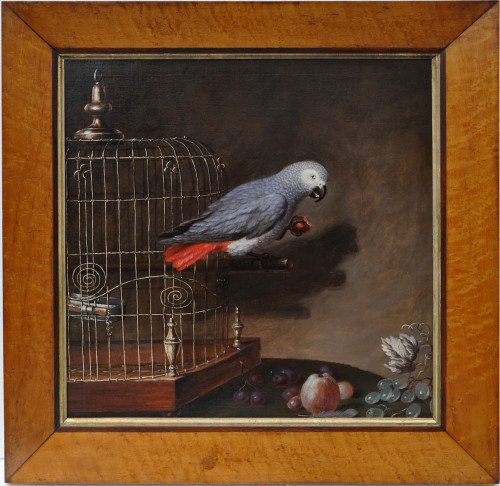At the Point; a sportsman beyond
At the Point; a sportsman beyond
EDMUND BRISTOW
English School
1787-1876
At the Point; a sportsman beyond
Oil on canvas
63 x 75.8 cms
24¾ x 29 5/8 inches
Overall framed size 74.5 x 87 cms
293/8 x 341/4 ins
Provenance: Private collection purchased from Richard Green.
Edmund Bristow was born in Windsor on 1st April 1787 and spent his whole life there. He had a reputation as rather reclusive and consequently not much is known of the background details of his life. When he died in 1876, the Art Journal could find almost nothing to write about in its obituary of him such was the privacy of his life.
His father was a heraldic painter and probably gave his son his early instruction in painting. Bristow often favoured painting small works often painted on wooden panel with scenes around his native Windsor and Eton with meadows, pools and heath land with finely observed animals and found a good market for these among the local populace and from the school. He has been described as the "Little Master of English landscape painting" and Grant writes of his technique: "…with beautiful brushwork and immaculate liquid impasto he reproduced atmospheric effects of actual grandeur, often with the lurid lilac tone of an impending thunderstorm or the haze of a midsummer afternoon." In his small works, the careful and meticulous detail emulated the manner and technique of the cabinet paintings from the 17th century Dutch Golden age. Another critic wrote: "Usually known for his exquisitely detailed oils in small scale, he also painted larger canvases with delightful sensitivity and skill."
The subject matter portrayed in Bristow's work was wide and included domestic interiors, street scenes with shops particularly in Windsor and its environs, landscapes, some portraits and equestrian portraits and open air genre scenes with boys at play, and still life as well as a large selection of sporting scenes - particularly favouring shooting and coursing subjects - and animals. Some of his pictures were humorous compositions such as "Before the Monkey Duel," "A Monkey holding up a Notary" and "Dispensing of medical electricity (electrotherapy)." He was a friend of the outstanding Victorian animal painter Sir Edwin Landseer and it is believed that Bristow gave advice and assistance to the younger artist.
Early in his career, Bristow had secured some important patrons which included Princess Elizabeth and the Duke of Clarence who later became William IV. However, for an artist of such marked ability and acuity, his output seems lower than one might expect, especially considering that he lived until he was eighty-nine. His temperament may well have had a lot to do with this as he was known to hold strong and eccentric views. Furthermore, he rarely worked to order and even when a piece was completed, would then refuse to sell it. He ceased painting altogether in 1847, thirty years before he died on 12th February 1876, for reasons which have never been established and one can only assume that apart from his contrariness, he must have been financially secure enough not to have to work.
He exhibited twelve works at the Royal Academy, eleven at the British Institution and eight at the Royal Society of British Artists. Some examples of these works are: "Sporting dogs," "Terriers and rabbit," "A smith shoeing a horse," "Portrait of Jefferies, many years an earth-stopper to the Berkeley hounds," "Portrait of Mr Norman as Don Quixote in the pantomime performing at Covent Garden Theatre," "View of Windsor Castle," "The donkey race," and "A brace of partridges."
Some of his paintings were engraved and published in the Sporting Magazine and elsewhere.
Sally Mitchell, in her Dictionary of British Equestrian Artists, writes: "His horse portraiture gives the impression of a deep feeling for horses, being painted with great sensitivity, and his landscapes are well composed, making the most simple portrait into a delightful picture."
His works can be seen in the following museums and institutions: Royal Academy Collection, The Herbarium Library at the Royal Botanic Gardens at Kew, Walker Art Gallery, the Wilson in Cheltenham, Wellcome Library, Windsor Guildhall, Windsor and Royal Borough Museum, Nottingham Castle Museum, Ferens Art Gallery, Sheffield Museum, Somerset Museum at Taunton Castle, Plymouth City Museum and Art Gallery, Leicester Art Gallery, Wolverhampton Art Gallery, Towneley Hall Art Gallery and Museum, Worcester College at University of Oxford, the National Trust (Anglesey Abbey and Florence Court), Hanover, Denver Art Museum and Yale Center for British Art.
Bibliography:
The Dictionary of British Equestrian Artists - Sally Mitchell
Dictionary of British Landscape Painters - M H Grant
British Sporting Artists - W Shaw Sparrow
Dictionary of British Animal Painters - Colonel J C Wood
British Sporting Painting 1650-1850 - Hayward Gallery 1974/5
Dog Painting; the European Breeds - William Secord
Sporting Art in Britain - British Sporting Art Trust
Dictionary of British Sporting Painters - Sydney H Pavière
Dictionary of Victorian Painters - Christopher Wood
1787 - 1876
Oil on canvas
England
Provenance: Private collection purchased from Richard Green.
RELATED ITEMS

























